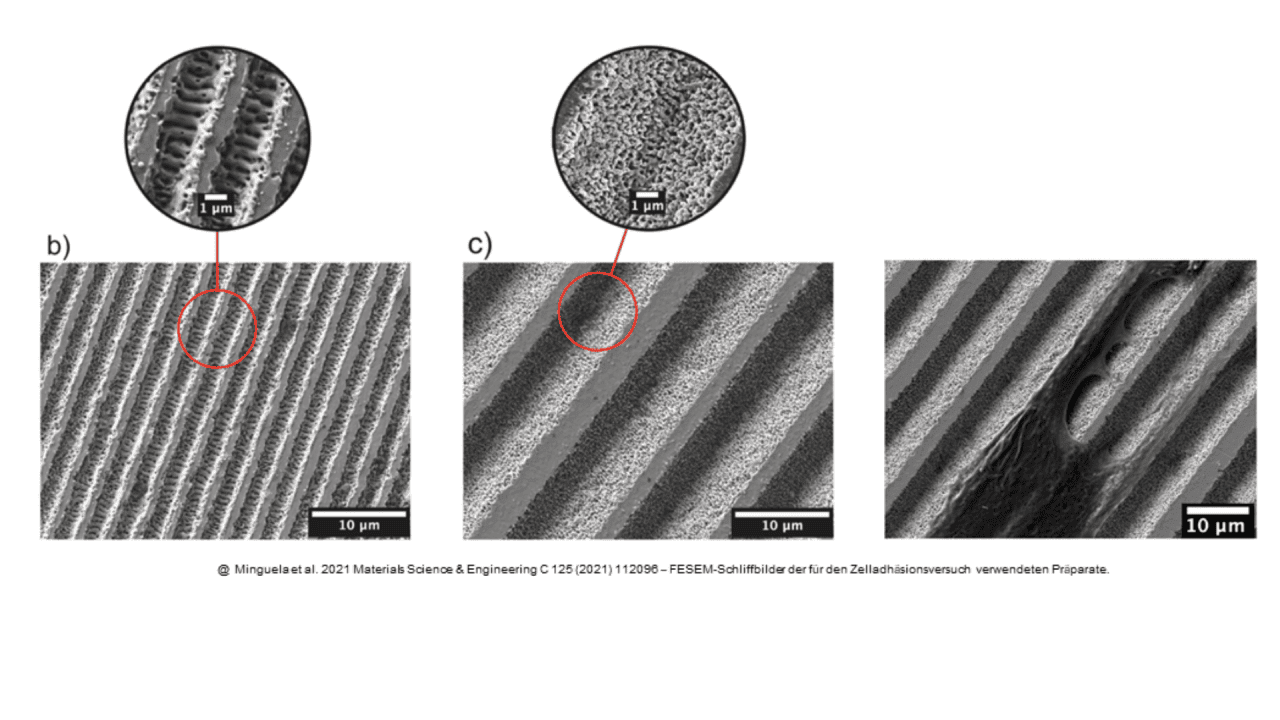SurFunction is presenting the innovative ELIPSYS® technology at MedtecLIVE 2024: Extended Laser Interference Patterning System is the newly developed revolutionary generation of laser interference treatment of implant surfaces and instruments and is a possible alternative to PFAS.
SurFunction GmbH from Saarbrücken uses innovative laser-based technologies based on award-winning direct laser interference patterning (DLIP). With the help of the next technology generation of this process, the ELIPSYS® class, surfaces can be "programmed" in record time and cost-effectively; inspired by nature's variety of adaptations. The young company offers tailor-made solutions for product developers in various industries in order to improve their offerings and processes while conserving resources.
Material-associated infections represent an important clinical problem, especially in medical technology. Microorganisms are - often unavoidably - introduced into the surgical wound with instruments during an operation, which begins a race for colonization between biofilm-forming bacteria and the desired tissue integration. A variety of studies show how biofilms negatively affect implant surfaces and promote infections. Biofilms are involved in 65% of infections and are therefore a contributor to 80% of chronic diseases (Flores et al. 2022). With DLIP, a better influence on the cell activity of problem germs, such as Pseudomonas aeruginosa, was demonstrated by at least 16% (Zwahr et al. 2017). It has been proven that the microsurfaces can hinder adhesion and biofilm growth (Valle et al. 2015), meaning that the periodic structures play an important role in the colonization and retention of bacteria on the surface (Helbig et al. 2016).
This biofunctionalization makes it possible to distinguish between attracting desired cell types and keeping away undesired cell types, and thus represents a promising approach to improving biocompatibility without changing the actual material properties (Schieber et al. 2022). On the one hand, adhesion, migration and proliferation of cells could be influenced solely by topographical adjustment of the surface (Schieber et al. 2022). On the other hand, additional selected biofunctional molecules can be applied to the surface to additionally support their effect, for example endothelialization against thrombosis formation, or supporting the differentiation of fibroblasts into osteoblasts (Schieber et al. 2017, Minguela et al. 2021) . However, since an effective effect is achieved with the topographically changed surface alone, the additional coating can be dispensed with in order to reduce barriers to regulated approval.
Further possible applications for ELIPSYS® result from the regulation banning problematic substances such as PFAS (Per- and polyfluoroalkyl substances), which are currently used in a large number of medical devices due to their durability, biocompatibility and thermal, electrical and chemical stability. This applies to slippery surfaces of catheters and minimally invasive instruments, as well as medical devices and even simple surgical materials.
Outlook: Cell studies with ELIPSYS® bring clinically relevant insights for the future that can also be transferred to space: Research with ELIPSYS® carried out on the ISS space station could inspire future antimicrobial materials for use in space (Mueller et al. 2021, Sims et al. 2022). The risk of biofilm formation is up to 5 times higher under space conditions than on Earth. The growth of space bacteria is faster here, while they have higher resistance to disinfectants and other decontamination strategies (Zea et al. 2018).
Detailed literature available upon request.
